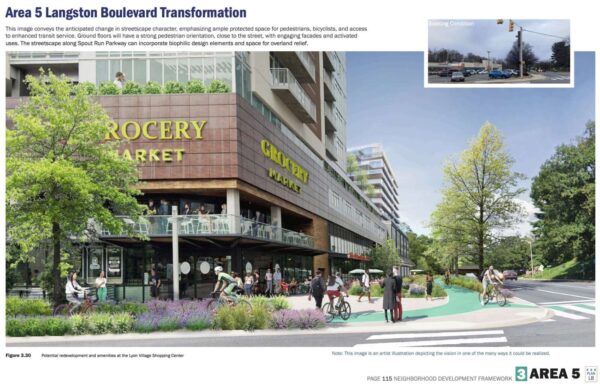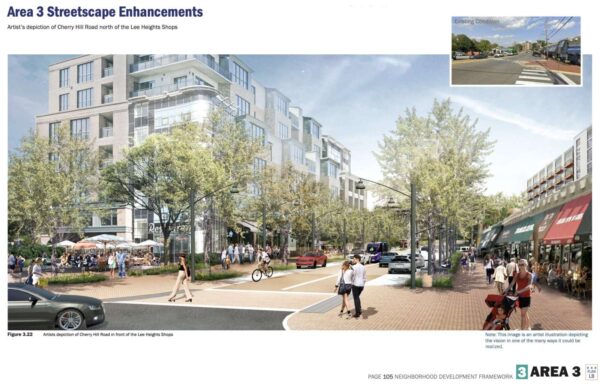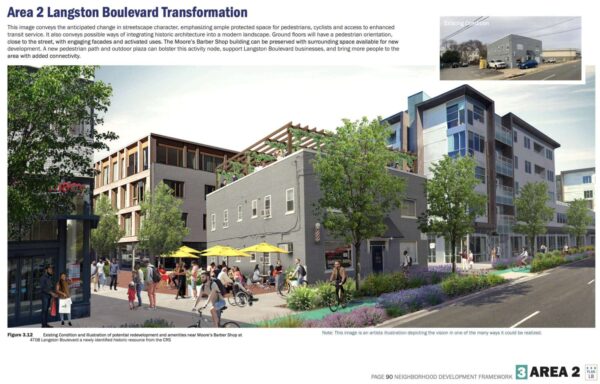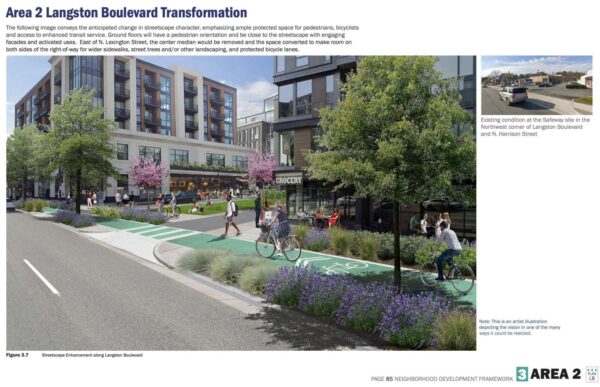(Updated at 3:45 p.m.) Plans to redevelop the Americana Hotel in Crystal City with apartments could get final approval next month, Arlington County says.
“The County is targeting April for full Planning Commission and Board review, but that is subject to change,” Dept. of Community Planning, Housing and Development spokeswoman Erika Moore told ARLnow.
JBG Smith proposes to demolish the former hotel at 1400 Richmond Hwy and build a 19-story, 639-unit apartment building with 3,885 square feet of ground-floor retail. If approved next month, construction could wrap up in 2026 or 2027, a company representative said in a Site Plan Review Committee meeting last month.
Up to this point, JBG Smith has overcome sloping terrain and maneuvered future development plans for neighboring sites and Route 1, which the Virginia Department of Transportation plans to lower. Per the meeting discussions, the developer is spending the remaining time before final review ironing out transportation and sustainability elements.
The building will have 188 on-site residential and visitor parking spaces. JBG Smith proposes setting aside 206 spaces for residents at the nearby Bartlett Apartments, which is a quarter-mile away. County code allows property managers to provide spots on other properties they own up to 800 feet away, says Kedrick Whitmore, an attorney for the project.
Some SPRC members differed over whether this would be a burden.
“One of our group members in that situation, they lived in a place and had off-site parking, it was so hard every time they had shopping to get from one place to another,” said Pedestrian Advisory Committee Secretary Pam Van Hine. “How are you going to mitigate that?”
Also speaking from experience, Transportation Commission Chair Chris Slatt said his first apartment after college had off-site parking about the same distance away.
“It was occasionally annoying but otherwise not a big deal,” he said. “We all know how much parking costs to build. If it means you are 100 bucks a month under rent because it’s annoying, I would happily take that if I were fresh out of college.”
Malcolm Williams, an associate with JBG Smith, said the Bartlett garage is three-quarters full and use will likely decrease with additional transit usage.
(The county is expanding bussing in the area via the extension of the Crystal City-Potomac Yard Transitway, while advocates of an at-grade Route 1 want to see more walking, cycling and scooting along the urban boulevard.)
The building will also target younger people working at Amazon or other nearby companies who are less likely to own cars. To Van Hine’s point, however, Williams did acknowledge the need for additional managerial effort.
“Anytime you have shared parking, it’s going to require heavy touch from the onsite property manager to make sure that drop offs and things of that nature are managed efficiently… and it’s legible for people,” Williams said. Read More
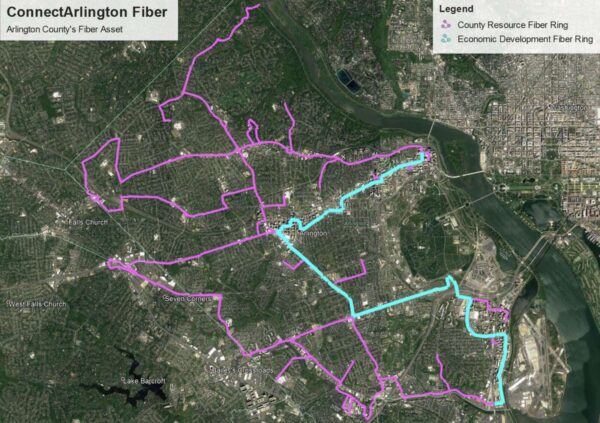
Arlington County is surveying residents and businesses to understand how they use broadband internet service and if their access can be improved.
The results of the survey are part of a $250,000 study that could inform ways to bridge the digital divide between residents with good internet connectivity and those without it, using the county’s existing fiber-optic network, dubbed ConnectArlington.
“The Broadband study builds off past work to fill in information gaps and provide a clearer picture of the County’s broadband needs,” Erika Moore, a spokeswoman for Arlington County Department of Community Planning, Housing and Development, tells ARLnow.
Arlington has an extensive fiber network, which it installed seven years ago to provide connectivity for county and Arlington Public Schools facilities, support public safety needs and encourage economic development. She says this move has since saved the county money and now allows for additional uses, such as connecting traffic cameras, emergency services and colleges across the area.
Now, the county is partnering with Vienna-based consultant Televate to look at how to leverage what it has to bridge the digital divide, an issue exacerbated by the pandemic.
“Based upon gaps identified, the consultant will lay out a comparative evaluation of different service delivery models to address the County’s needs,” Moore said. “Depending upon the outcome of the study, the County may need additional analysis to further research a specific model.”
The study will also review a license agreement for leasing strands along an 864-count fiber line dedicated to economic development. The concept, intended to give local companies higher-speed internet at lower costs than big-name providers like Comcast, has languished because would-be providers found the agreement onerous. So far, only JBG Smith has agreed to lease some of the cable to help build its 5G-enabled “Smart City.”
“The likelihood of modifying the license or changing or adding other policies will be considered after the results of the study,” Moore said.
The survey, available now in English and Spanish, asks people a few dozen questions about internet use. Questions include how long respondents have used the internet and how much it contributes to their jobs, whether they use broadband for telehealth services, if they’re satisfied with the speed and cost, as well as demographic questions.
Moore says the county has studied the digital divide before but not on this comprehensive of a scale. Past research targeted low-income housing and relied on Federal Communications Commission and U.S. Census data.
This “did not provide the level of detail needed and gave no indication of service quality, bandwidth availability, provider competition, or digital literacy needs,” she said.
A coalition of local advocates for making broadband a county-provided utility say the scope seems redundant given past efforts, however.
“The county has studied the digital divide to death. We have good numbers on that,” says ArlFiber Collective leader Tim Dempsey, adding that ironically, the survey is long and only available online.
“Televate LLC, does not appear to be interested in seriously studying municipal broadband and the current course and scope of the study could very well reproduce the same work on broadband that has been done in the past, without moving us forward in any meaningful way,” ArlFiber wrote on its website. “Residents and civic groups that are interested in community broadband for all, should reach out to the County Board members and let them know.”
Arlington County has accepted a site plan application for a senior living facility proposed to replace a church in the Alcova Heights neighborhood.
Sunrise Senior Living, a McLean-based senior living provider, proposes to demolish a church building at 716 S. Glebe Road to build a four-story, 60-foot-tall building with 108 assisted living units, 55 parking spaces, common and service areas, a covered porch and an outdoor garden.
Kedrick Whitmore, the land use attorney representing Sunrise Senior Living, says the development would add sorely needed assisted living facilities in Arlington County.
“This facility would provide or coordinate personal and health care services, 24-hour supervision, and assistance (scheduled and unscheduled) for the protection general supervision and oversight of the physical and mental well-being of aged, infirm, or disabled adults,” he said. “The current supply of such facilities in Arlington County is insufficient to meet the current demand.”
So far, the applicant isn’t looking to go beyond base density, and proposed community benefits include streetscape and sidewalk improvements, utility and affordable housing contributions and sustainable design, per application documents.
As the change in use would displace two child care programs, county planning staff are urging Sunrise to incorporate child care into the development.
“The County has a need for child care services,” county planner Leon Vignes said. “Please consider the possibility of collocating a child care use with this development to maintain an existing use.”
There are two programs operating inside the church, Children’s Weekday Program and Rainbow Road Preschool. County staff said one of the programs in operation there does not have the necessary approvals to do so, but did not specify which.
“A previously approved use permit for childcare uses affiliated with the existing Methodist church was discontinued with the operator noting the potential to resume operation,” associate planner Anika Chowdhury said in staff comments on the application. “A revelation confirmed by the applicant was that an existing daycare is currently operating at the existing church. There is no valid use permit approval on file for this operating use and a use permit is required for child care use(s) per the ACZO.”
If Sunrise were to consider incorporating a child care center, it would have to request changes to how the property is zoned, Chowdhury says.
County planner Matthew Pfeiffer, meanwhile, urged the applicant to increase the number of trees it will plant and make the architecture appear more historic.
“Recommend altering architectural style to match existing historic properties, such as Colonial Revival,” Pfeiffer said. “The most important site design aspect will be ensuring that there is a strong vegetated buffer on the western property line to screen The Alcova,” a historic property next door.
The building’s owner, Arlington United Methodist Church, sold the property to Sunrise last year, leaving a different Christian congregation that meets there, the Redeemer Church of Arlington, the child care programs and a clothing bank in search of a new home.
Sunrise has two other senior living centers in Arlington, in the Glebewood and Boulevard Manor neighborhoods.
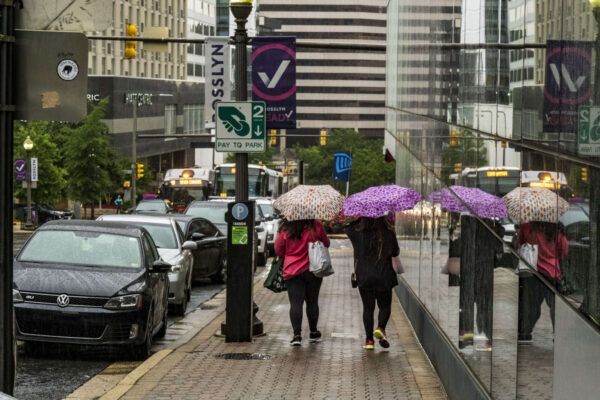
While the pandemic prompted a well-documented exodus to, and development of, sleepy suburban and exurban towns, the Rosslyn Business Improvement District says it has identified a different Covid migration pattern.
About a quarter of Americans reported moving to cities where they could be within a 15-minute walk or bike ride of grocery stores, healthcare and parks, according to a national survey by the BID.
The survey also found 41% plan on moving to be within walking or biking distance of their preferred amenities — including coffee shops, schools and gyms — in the next one to three years. That’s in contrast with places that prioritize mobility by motor vehicle, with sidewalks and bike lanes as a relative afterthought.
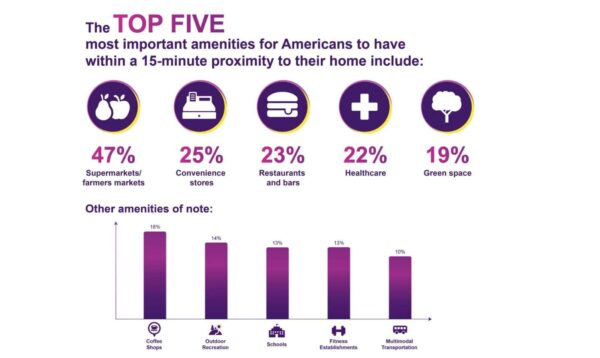
The idea of being in a place within a 15-minute walk or bike ride from these amenities, dubbed a “15-minute city,” was developed by French-Colombian academic Carlos Moreno. He says his aim is to “rebalance” localities that have been designed to boost productivity rather than well-being. The Mayor of Paris, Anne Hidalgo, popularized his idea when lockdowns kept people closer to home than usual, and efforts to realize Moreno’s idea took hold there and in other European cities.
Arlington County Planning Commission member Daniel Weir embraces the concept, saying it is better for people and the environment.
“Cities are for people, not cars, and we should be able to get our needs met within a 15-minute walk or bike ride,” he said. “Once upon a time, in living memory for our grandparents, every city in America — from Luray, Virginia to Manhattan — was a 15-minute city. Sometime after the war, we got the idea that cities were about highways and cars, and people had to make way. Now, we’re seeing auto-oriented infrastructure and development is one of the most flawed social experiments of all time.”
Arlington is now trying to at least partially unwind auto-oriented development along Langston Blvd and Richmond Highway, but has yet to tackle the suburban neighborhoods that fall outside its primary planning corridors. Still, the county, which has no singular city center, has had a number of “15-minute cities” spring up through transit-oriented development, which began in the 1960s.
Transit-oriented development created compact urban villages of Rosslyn, Courthouse, Clarendon, Ballston, Pentagon City and Crystal City along the Orange and Blue Metro lines, and is facilitating more development on the bus-connected Columbia Pike.
“The 15-minute city approach is consistent with many facets of the Arlington Comprehensive Plan and is more intrinsic in Arlington’s principles for compact and transit-oriented development,” says Erika Moore, a spokeswoman for Arlington County Dept. of Community Planning, Housing and Development.
Where the pandemic is helping advance the 15-minute city concept in Arlington is via an expansion of uses permitted in the county’s densest zoning districts.
“This is creating potential for expanded uses, including workshop spaces, breweries/distilleries, indoor agricultural such as hydroponics, and animal boarding,” she said. “This blending of retail, restaurants, entertainment, and destination uses, along with offices in smaller, non-traditional formats may prove beneficial to residents living in any of Arlington’s mixed-use corridors or in close proximity to them.”
No longer does a Rosslyn resident, for instance, need to drive to a lower-density part of Arlington to board their pet.
While Rosslyn has transformed from downtown district to 15-minute city, BID President Mary-Claire Burick says the county, property owners and the BID must keep “working together to keep our urban center active and accessible.”
Burick says her organization supports the mixed-use developments and the amenities they’re bringing.
“We support Arlington County’s planned investments in public green space and critical transportation infrastructure — such as the removal of the Fort Myer Tunnel,” she added, “and further building out Rosslyn’s network of pedestrian and bike facilities — which are essential in helping make our amenities even more accessible.”
The BID will focus on “economic resiliency efforts, as well as our community events, programming, and placemaking, all which help create an urban downtown where people want to be,” Burick said.
St. Charles Borromeo Catholic Church in Clarendon has filed conceptual designs for a new three-story church and parish center and a 10-story apartment building.
The mid-century church sits on two-and-a-half acres of prime property between the Clarendon and Virginia Square Metro stations, much of it is dedicated to parking.
Under the proposal, which has been in the works for a few years now, the 429-unit apartment building will have a courtyard in the center, a rooftop pool and ground-floor amenities. The church will be connected to the parish center, with meeting rooms and an event space, by cloistered gardens.
Parking will move underground and the two structures will be connected by an enhanced alley. Fairfax Drive will be redesigned as a walkable plaza, and there will be a new “West End Plaza” located in front of the church on a county-owned parcel.
But the plans include design elements that could conflict with streetscape design guidelines stipulated by the update to the Clarendon Sector Plan adopted earlier this year. Because of this, the church is seeking the perspective of county planning staff.
“The Applicant desires County feedback on the proposed conceptual plan, and particularly would like to discuss various recommendations of the Clarendon Sector Plan relating to ground-floor transparency, clear walkway zones, and sidewalk grade,” per a letter to the county included in the filings. “Existing site conditions and the programmatic needs of the proposed religious institutional use may complicate full achievement of certain Sector Plan recommendations relating to streetscape design.”
In other words, some elements of the proposed St. Charles Church — which reflect a centuries-long tradition of church architecture — may not align with the sector plan design guidelines for frontages along Washington Blvd and Fairfax Drive.
The streetscape guidelines, aimed at creating an attractive walking experience, call for sidewalks and store entrances to be the same level, without steps, and for storefronts to have mostly transparent windows unobstructed by blinds, fabrics and shelving. These are typified by the streetscapes of The Crossing Clarendon shopping center.
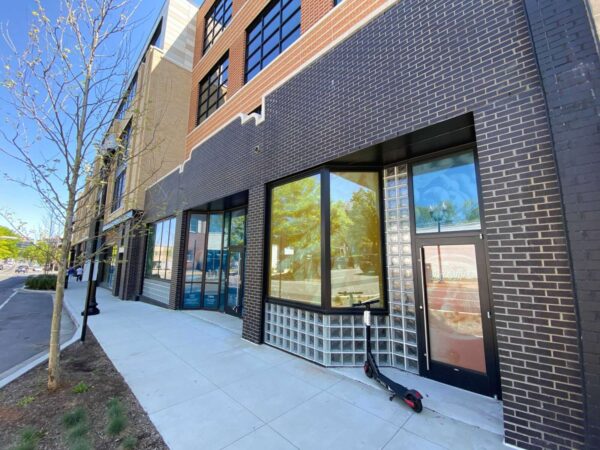
“Transparency is a key factor influencing the pedestrian experience: visual access, views to and from interior spaces, and interesting shopfront lighting and displays add visual interest and opportunities for the informal surveillance of public spaces,” per the sector plan.
Like many Roman Catholic churches throughout history, the renderings of St. Charles show an outdoor staircase, doors and a lobby (narthex) separating the sanctuary from casual pedestrian view.
The façades, meanwhile, include stained glass, which typically depict biblical stories and saints. These embellishments are not at pedestrians-scale; rather, they follow in the architectural tradition of drawing the eye upward to aid the worshipper in contemplating heaven.
While the county reviews the designs, the church is bringing a developer partner on board, according to a September church bulletin. The church will lease the land underneath the proposed apartment building to the developer in order to finance the project.
“We continue to refine our cost estimates for the project, but we anticipate that most of our total costs will be met by the proceeds from a long-term lease with our development partner,” parish priest Don Planty writes in the update. “Parishioners will be called upon to contribute to help cover immediate financial needs during planning and in support of sacred art for the new St. Charles church.”
Planty said the planning team estimates further planning, entitlement and permitting will take two years, followed by another two years for construction.

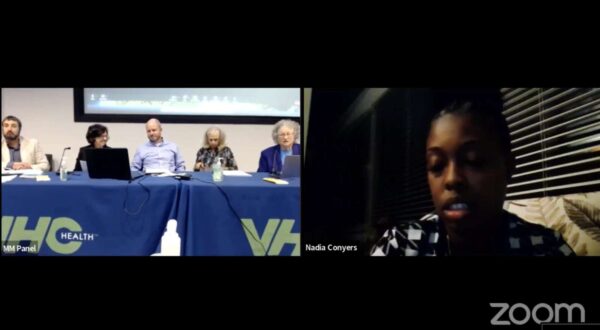
Before four panelists could jump into discussing Missing Middle housing, moderators of Arlington County Civic Federation‘s forum last night (Tuesday) did something unusual.
They laid out ground rules for civil discourse, as other community discussions of the county’s proposed zoning changes have gotten loud, and even rowdy.
Arlington County is gearing up to make a decision on whether to allow low-rise, multifamily dwellings to be built on lots currently zoned exclusively for single-family homes. Leading up to the decision, the county and local organizations have been holding many discussions about the potential impacts of these changes.
Panelists, who spoke for themselves, couldn’t discuss their “feelings” and would instead have to provide a citation for every fact or projected outcome, co-moderator Nadia Conyers said. Speakers needed to seek common ground and respect areas of disagreement, and could not attribute motives to what other speakers were saying.
The panelists reviewed each other’s presentations to ensure facts were not misrepresented, co-moderator Jackie Snelling said.
“We spent a lot of time planning this discussion, which is a little different from how our normal discussions go,” she said.
Those in favor of Missing Middle said Arlington’s housing shortage requires the county to do something.
Michael Spotts, the founder of Neighborhood Fundamentals, who has researched housing for the last 15 years, said Arlington as it is currently zoned is running out of developable space. Meanwhile, developers are tearing down starter homes to build so-called McMansions, while certain neighborhoods north of Route 50 are essentially off-limits to renters, he said.
“I believe Arlington does need to grow and continue to add new housing,” Spotts said. “Aside from the economics, I don’t believe it’s fair to say certain neighborhoods shouldn’t have to contribute to meeting the growing need for housing.”
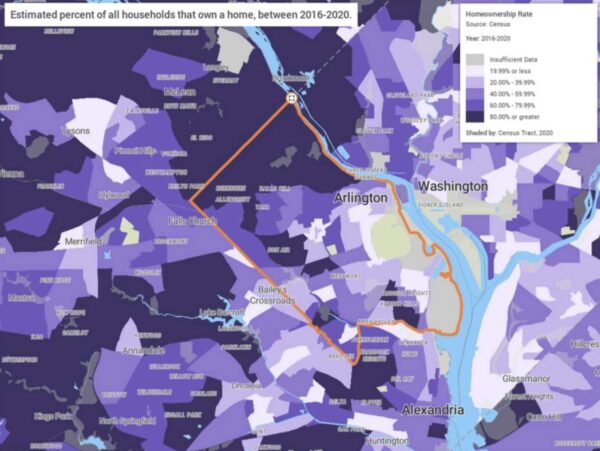
While not a panacea for all of the county’s housing concerns, he says the zoning changes would add units, increase ownership opportunities and marginally cut down on sprawl development in Loudoun, Fairfax and Prince William counties, which in turn has environmental impacts in Arlington.
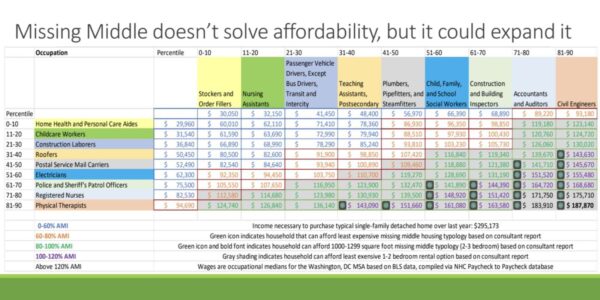
He and Eric Berkey, who chairs Arlington’s Housing Commission, said the changes would help undo the lasting effects of last century’s exclusionary and racist zoning policies. After racially restrictive covenants became illegal, Arlington County used economics to segregate Black people by banning the construction of row houses and creating zones for exclusively single-family detached houses.
“Missing Middle can provide opportunities for more families to live in not just the three or four neighborhoods where we have duplexes, but the entirety of the county in the long term,” Berkey said. “Characters make the neighborhood. It’s important for the county to get rid of these exclusionary housing policies and make sure folks can live in the entirety of our community.”
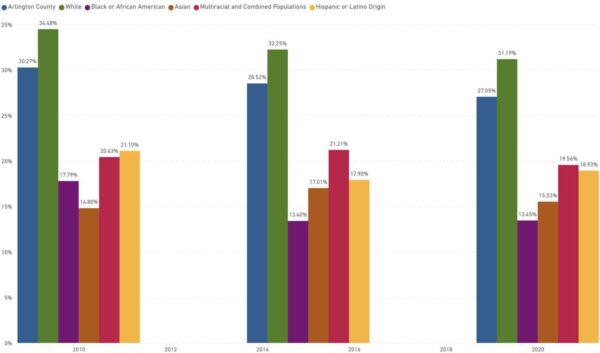
Opponents Anne Bodine, a member of Arlingtonians for Our Sustainable Future, an advocacy group concerned about rapid growth, and Julie Lee, a member of a coalition of 15 civic association presidents opposed to the framework, said more housing is needed, but Arlington does not need to pick up the slack for a region-wide shortage.
“We cannot solve all of the region’s housing issues, but we should set lofty goals, and we must implement a plan that would achieve our desired objective,” Lee said. “The Missing Middle plan does not do that.”
They argued that the zoning changes won’t make it easier for people of color and low- and middle-income earners to buy here, despite assertions to the contrary by the local chapter of the NAACP and others.
“The county says offering a diversity of housing types is a key Missing Middle goal. Why do we need diverse housing types that don’t promote racial and economic diversity?” Bodine said. “A household needs to earn 118% of the area median income to afford the cheapest Missing Middle unit of $416,000. Looking at current Arlington populations, senior, Hispanic and Black median household incomes fall short. It doesn’t mean none of these groups can afford Missing Middle units, but it shows how slim the chances are.”
(Updated at 4 p.m. on 12/15/22) The Penske truck rental location on Columbia Pike — which once had an ART bus crash into it and stay there for a month — has closed.
And the replacement for the storefront and expansive parking lot, at the Pike’s intersection with S. George Mason Drive, may be something completely different.
The site is expected to figure into plans from Jair Lynch Real Estate Partners to revamp the neighboring Barcroft Apartments over the next decade. It sits at one edge of the sprawling garden apartment complex, next to a 7-Eleven store, and was purchased by the developer around the time of the buzzy housing acquisition.
Jair Lynch also purchased the small strip mall with the South and Central American eatery Cafe Sazón and a Goodwill location at 4704 and 4714 Columbia Pike, respectively.
“The Penske Truck Rental Mart location at 4110 Columbia Pike in Arlington has permanently closed as of Sept. 30,” Alen Beljin, a Penske Truck Leasing spokesperson, told ARLnow. “Our company had leased the building, so we did not have the opportunity to renew when the property was sold.”
While Penske packed up, the local nonprofit Arlington Community Foundation (ACF) wrote a report that shows how Jair Lynch could set aside some units for residents making less than 30% of the Area Median Income (AMI), using the commercial site and county development tools. Jair Lynch has pledged to set side 1,344 apartments for people making 60% or less of AMI for the next 99 years, supported by loans from Amazon and Arlington County.
“Our vision is that in perpetuity, 30% AMI households can live there,” said Michael Spotts, an Arlington resident who runs the consulting firm Neighborhood Fundamentals, and a co-author of the ACF report. “Barcroft has been a place where people at those income levels can call home. As this neighborhood redevelops, we want to ensure people can continue to call that neighborhood home.”
ACF published the analysis ahead of the Master Financing and Development Plan Jair Lynch is expected to file with Arlington County Manager Mark Schwartz at the end of October. This plan will spell out how the developer plans to renovate existing apartments, build new housing and keep down rent for lower-income residents.
“The plan is part of the financing agreement with Amazon and Arlington County,” David Hilde, Vice-President of development for Jair Lynch, told Arlington’s Tenant-Landlord Commission last month. “It goes through how to maximize the investments Arlington and Amazon made, whether that’s baseline preserving affordability, or exploring options to deepen affordability.”
The developer did not respond to multiple requests for comment for this story.
What ACF recommends
Jair Lynch could build a standard market-rate, mixed-use apartment building on the Penske lot, per the ACF report, as developers who follow the Columbia Pike Commercial Centers Form-Based Code are not required to provide affordable units.
But, using the commercial sites, the tools ACF laid out and another $20-30 million, the developer could set aside 255 units for low-income households earning 30% AMI or less for the next 30 years, ACF says.
“We think this is going to be challenging to accomplish and it’s going to require a lot of commitment from stakeholders,” Spotts said. “We’re optimistic, based on conversations we’ve had, that this can be pulled off.” Read More
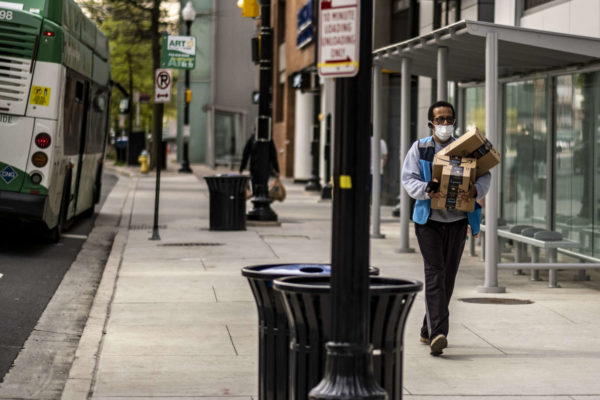
Feeling the pressure to respond to its soaring office vacancy rate, Arlington County is looking to fill empty buildings quickly.
One option for adding tenants and knocking down the 20.8% vacancy rate would be to permit companies to set up small warehouses, or micro-fulfillment centers, inside of office buildings that are struggling to attract new tenants — especially as remote work appears here to stay.
The proposed solution is part of a new initiative to modernize and add flexibility to the county’s zoning approval process. In addition to micro-fulfillment centers, this plan suggests a few other non-traditional uses for office buildings, from breweries to urban farms. It also provides an expedited public process with shallower community engagement so that the Arlington County Board can sign off more quickly.
“The goal of this different approach for new or amended uses is to have them ready for board consideration more quickly than other typical zoning studies,” said Jill Hunger from the Dept. of Community Planning, Housing and Development (CPHD). “This is the first application of the county manager’s strategy to ensure commercial market resiliency.”
After a discussion that called out county staff for not engaging enough with the community, all but one member of the Planning Commission voted to send the amendment to the Arlington County Board for approval on Monday. Commissioner Stephen Hughes abstained.
The proposed zoning change limits each micro-fulfillment center to 10,000 square feet, reflecting industry best practices and staff discussions with center operators, Hunger said. If the center is in a ground-floor space and opens onto an active street, it must provide a walk-in customer sales area.
Staff recommend that no fewer than 10% of deliveries should be made by a delivery worker on foot or on a bicycle.
“It’s anticipated that quite truthfully after the initial startup, and if more than one micro-fulfillment center operates in Arlington, this modal split may actually increase,” Hunger said.
While Planning Commission members ultimately voted in favor of permitting micro-fulfillment centers, a number criticized the plan for not talking to the civic associations that could be impacted.
According to a draft county document, the county placed public notice ads with the Washington Times for the Planning Commission and County Board meetings, updated its webpages for zoning studies and its response to office vacancies, and briefed the Planning Commission and the Economic Development Commission.
“We feel we have done the outreach that’s consistent with many zoning text amendments,” Hunger said.
But without asking residents for their input, Commissioner James Schroll said he has a hard time believing the County Board can approve the change without additional public hearings. The Board is expected to take up the matter at its Saturday, Oct. 15 meeting.
“How we do what we do matters,” he said. “I get that you want to move quickly and I support that and I also want staff to be engaging with broad stakeholders as you do that.”
He said he’ll be reticent to support future amendments to consider permitting breweries and urban farms in office spaces, for instance, if there isn’t more stakeholder outreach.
(Updated 09/30/22) As Arlington County continues collecting feedback on the preliminary concept plan to turn Langston Blvd into a “Green Main Street” over several decades, a few disagreements have emerged.
Some say county staff need to coordinate more with existing plans for two neighborhoods along Route 29, as well as the Missing Middle Housing Study. Others say the building heights should be taller — to allow for more affordable housing — or are too tall already.
Late in August, Arlington County released a draft plan showing what Langston Blvd, formerly Lee Highway, could look like if the county encouraged denser housing and more walkable, greener streets, and planned for future infrastructure, transportation and facility needs. Since then, the county posted an online feedback form and launched in-person feedback opportunities called Design Studio sessions and virtual neighborhood meetings.
More than 200 people have attended the three virtual community meetings and Design Studio sessions, and more than 200 people have responded to the feedback forms, Rachel LaPiana, a staff member with the Department of Community Planning, Housing and Development, tells ARLnow.
“We encourage the community to provide feedback on a set of specific questions about what is proposed in the PCP and attend one of the upcoming community events,” she said.
There are still a number of opportunities to learn more about Plan Langston Blvd and provide feedback, which staff will collect through early November. This Saturday, the Langston Boulevard Alliance will host a walking tour, during which county planners will be able to answer questions. Another tour will be held on Sunday, Oct. 16.
The Langston Boulevard Alliance is also hosting three Design Studio sessions, held from 12-2 p.m. on Friday, Oct. 7 and 21 and Nov. 4 at its office (4500 Langston Blvd). A fourth virtual community meeting discussing housing, stormwater and transportation will be held Tuesday, Oct. 11, from 7-9 p.m.
It’s too soon to summarize the substance of the feedback that has been collected, LaPiana said.
“Once the engagement period ends, we will compile and analyze all of the community feedback,” she said.
Differing takes have since surfaced during a debate for County Board candidates held by the Arlington Chamber of Commerce, as well as during this month’s County Board meeting.
“I’ve largely heard muted feedback, and that is not always the case with plans,” said County Board member Matt de Ferranti, who’s running for re-election this November, during the debate earlier this month. “I have heard a number of compliments. I actually think the plan is in decent shape.”
But, he said, the plan challenges the county’s ability to advance multiple planning fronts simultaneously, including the controversial Missing Middle Housing initiative, in which the county is considering whether to allow townhouses, duplexes and other low-density housing types in residential areas zoned exclusively for single-family homes.
“We have to, at least in my view, do them separately, because we can give our community full chance for engagement,” he said.
Independent candidate Audrey Clement questioned why upzoning is needed at all, with the bevy of new housing units proposed in Plan Langston Blvd and envisioned in the approved Pentagon City Planning Study, which, like Plan Langston Blvd, calls for significant, mostly residential redevelopment and more designated green spaces.
“We have something called a siloed process, where we have three plans, each ignorant of each other, that will increase housing on a massive schedule. That doesn’t make sense,” Clement said. “These plans should not be developed in a vacuum, but that appears to be what is happening right now.”
East Falls Church homeowner Wells Harrell told the County Board this month that Plan Langston Blvd ought to examine why development has lagged in East Falls Church and Cherrydale, despite the fact both underwent planning efforts in 2011 and 1994, respectively.
“Metro today remains surrounded by parking lots at the East Falls Church Metro station, and so far, there’s only been one — one — residential development since the plan was adopted in 2011,” Harrell said. “We need to take stock of why we haven’t achieved the goals set forth in the Cherrydale and East Falls Church area plans… in order to not just learn from the lessons we had there, but to guide us going forward and make sure we achieve the visions for Langston Blvd.”
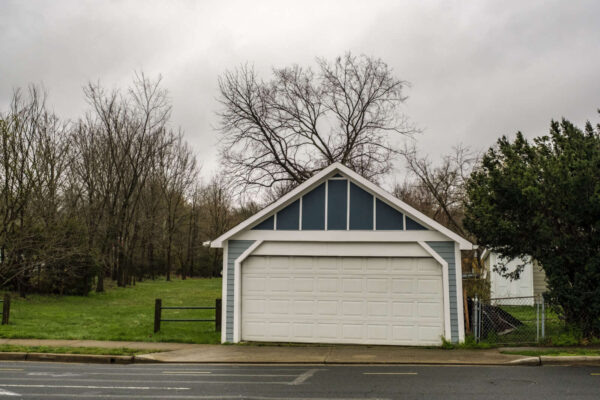
County planners previously told ARLnow that they need the County Board’s go-ahead to revisit the East Falls Church plan. Further discussion about encouraging development in the area could come after the Board adopts a final Plan Langston Blvd document.
For now, plan authors say a final Plan Langston Blvd draft will recommend whether the existing redevelopment roadmaps for East Falls Church and Cherrydale need to be reviewed and refined.
Building heights are another source of disagreement. Plan authors write that building heights were lowered in response to some critical community feedback. That criticism also suggested the changes would diminish the stock of market-rate affordable apartments, lower property values, change neighborhood character and push out small businesses.
County staff say that lower heights may satisfy some residents, but it will slow down redevelopment.
“Staff believes the proposed concept plan will offer incentives for redevelopment, however, the levels are only moderately different from what is allowed for by-right development and site plan projects,” county planner Natasha Alfonso-Ahmed said in a video introducing the plan. “This means that we may see more by-right development, and improvements such as streetscape enhancements may take longer to be realized or happen in a fragmented way.”
And the changes dismayed pro-density advocates, including Harrell and independent County Board candidate Adam Theo.
“I am disappointed to see that the most recent draft has scaled a lot of that back,” Theo said.
De Ferranti, meanwhile, says there is one neighborhood where the heights may still be “a touch too high” — the area near Spout Run Parkway, where plan calls for buildings 12-15 stories tall.
“That decision is one we have to engage as a community on,” he said.
The new preliminary concept plan for Langston Blvd envisions the corridor’s transformation over several decades into a “Green Main Street.”
The extensive plan — which has been in the works for years — calls for land use changes along the former Lee Highway, with the aim of encouraging re-development over time, though the proposed zoning changes are not quite as drastic as what had been discussed last year.
“The new recommended building heights are generally two to three stories lower than were considered in the 2021 [Land Use Scenario Analysis],” said the plan, a 135-page document filled with small text and large renderings. “While it may take longer to implement the vision and improvements along Langston Boulevard may happen intermittently, the plan provides options for property owners to execute the plan’s vision and recommendations.”
Should the vision be realized, the corridor’s ubiquitous, aging strip malls and large surface parking lots would be replaced with taller, more walkable hubs of social and economic activity.
The Lyon Village Shopping Center could be turned into a 12-15 story mixed-use development, with the current Giant grocery store and The Italian Store on the ground floor, looking out on a bike path that connects to the Custis Trail and a reconfigured intersection of Langston Blvd, N. Kirkwood Road and Spout Run Parkway.
The Lee Heights Shops, home to Arrowine and Pastries by Randolph, may remain largely as-is, but with mixed-use developments of up to seven stories and pedestrian promenades around it.
Another nearby landmark, Moore’s Barber Shop, could also remain in its current building, but next to a five-story apartment building an an outdoor cafe, rather than parking lots and a car care center. Across the street, however, the McDonald’s could make way for a new public school and other public infrastructure, alongside a renovated Langston-Brown Community Center.
Further down the road, the busy shopping centers surrounding the intersection of Langston Blvd and N. Harrison Street — currently anchored by Harris Teeter and Safeway grocery stores — could become mixed-use centers of housing and ground-floor retail, up to 7 stories.
In addition to the current mix of restaurants, grocery stores and other businesses, the plan calls for other types of commercial tenants, including coworking spaces, fitness centers, hotels, and childcare providers.
Langston Blvd itself, also known as Route 29, would become more pedestrian oriented, with street trees, wider sidewalks and some bike infrastructure. Two vehicle lanes would be maintained in each direction, but often without the center median. Where bike lanes or a shared use path are not possible, the plan calls for parallel bike routes, including along 22nd and 26th streets.
“The vision for Langston Boulevard is corridor-wide and is based on the community’s desire to transform the corridor into a resilient, renewable, and re-energized place by 2050,” the plan says. “The Preliminary Concept Plan is informed by the community’s aspirations and priorities and the unique characteristics, challenges, and opportunities for achieving the vision in each of the neighborhood areas.”
Sparks flew during the County Board meeting on Saturday (June 18), where supporters and opponents of the proposed missing middle housing framework faced off.
Supporters of the proposal like YIMBYs of Northern Virginia, which supports denser housing options, filled rows of seats at the meeting. They held up signs saying “Missing middle yes,” “Arlington is for everyone” and “Won’t you be my neighbor.”
Meanwhile, opponents like Arlingtonians for Our Sustainable Future (ASF) — an advocacy group against increased housing density — packed the other side of the room. They held up signs saying “The Arlington way has gone astray” and “Save our neighborhood. No upzoning here. No duplexes+ here.”
Wells Harrell, who spoke in support of the proposed changes to housing policy — which would allow smaller-scale multifamily housing in neighborhoods currently zoned only for single-family homes — said it gave more people the choice to live in Arlington. He said the policy was also popular among renters, people of color, and younger generations like Millennials.
“We see 170 homes torn down every single year, do you choose to let some of those homes be replaced with missing middle homes that add more variety, increase more capacity and cost less than the big expensive mansions that would go up instead?” he said during the County Board’s public comment period.
Proud to have been at this meeting to support an inclusive Arlington! @yimbyaction https://t.co/RkKsbhemSY
— Kathleen Otal ☮️ (she/her) (@KathleenOtal) June 19, 2022
On the other hand, Anne Bodine, who spoke on behalf of ASF, said increasing housing density would displace long-term residents with an influx of “mostly whiter and wealthier newcomers” and raise housing costs “through inflated land values.”
“We ask you to postpone the missing middle work session until September, project total population increase of maximum missing middle buildout along with other density measures taken since 2018, and prepare forecast comparing impacts of current zoning on the environment, the budget and demographic outcomes,” she said.
In a subsequent press release, ASF said its supporters “berated the Board” for “a pursuit of ‘density first’ [that comes] at a very great social and financial cost.”
Emotions ran so high as to elicit boos and shouts for speakers like Harrell and for County Board Chair Katie Cristol, when she cut off another speaker for violating the “one speaker per topic” rule.
(Other speakers were able to get around the rule, however, by talking about their concerns on the effects of increased housing density on schools and the county budget.
Residents Blast Arlington Board for Lack of Development Planning —
County Board Shuts Down Public Comment on DensityThe Arlington Way Has Gone Astray https://t.co/3593b7rDS6 pic.twitter.com/UEWVFDcF8n
— Arlingtonians for Our Sustainable Future (@asfvirginia) June 21, 2022
Stacy Meyer, representing the Arlington County Civic Federation, said her organization would like to see the County Board reach out to adjacent neighborhoods and their civic associations when reviewing upzoning proposals and General Land Use Plan amendments.
The Civic Federation believes upzoning “frequently entails encroachment into lower density residential neighborhoods” and that “residents have no approval rights and little leverage for negotiation” in the face of proposed upzoning, according to a resolution passed by the organization.
A draft missing middle housing policy framework calls for allowing multifamily housing from townhouses to eight-plexes, depending on lot size, provided the building does not exceed the size currently allowed for single-family homes. Current zoning in Arlington restricts most residential land to building only single-family homes.
The County Board did not respond to the arguments raised on the proposed housing policy during the meeting. A work session on the policy is scheduled on Tuesday, July 12, according to the County Board’s website, while the online feedback form for phase two of the Missing Middle Housing Policy is open, according to the study’s website.
Missing Middle update: Work is underway to compile and analyze public feedback collected so far, but you can still share input via this form: https://t.co/8A061VxGgG. For more info, visit https://t.co/kbONmLmDDk. pic.twitter.com/Uy9sr0NPrg
— Plan Arlington VA (@planArlingtonVA) June 17, 2022
Should the Board vote next month to advance to the next phase of the Missing Middle Housing Study, it could set up a vote on zoning changes by the fall.


